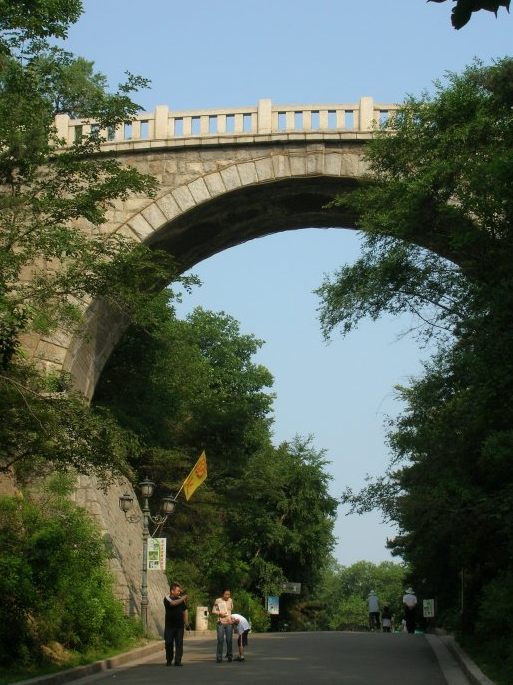


始建于1934年,距地面20余米,雄伟壮观,为北山昔日八景之一,称为“山洞悬桥”。因此桥单曲高耸,如人驼背,所以吉林人又多喜称“罗锅桥”。桥竣工时,奏请伪满洲国皇帝爱新觉罗·溥仪为桥赐名。溥仪百思不得,皇帝宝熙给溥仪讲了一个清圣祖仁皇帝爱新觉罗·玄烨(即康熙帝),东行巡幸吉林时的故事。当年康熙帝到吉林后,曾率皇亲国戚及王公贝勒到北山游猎。当他策马至两峰峦之坳时,曾揽辔回首,停马眺望吉林乌拉城。但见“苍岩翠壁两岸横”,“连樯接舰屯江城”,溥仪以此为典,赐桥名为“揽辔桥”。
Drawing-rein Bridge
Built in 1934, it is more than 20 meters from the ground. As one of the eight scenes of the Beishan in the past, it is so magnificent that it is known as the "suspension Cave Bridge". The bridge is highly arched like a humpback, so the Jilin people call it "Humpback Bridge" in an amusing fashion. When the bridge was completed, Emperor Aixinjiaoluo Pu Yi of the puppet Manchukuo was asked to give it a name. Pu Yi thought and thought but could not find an appropriate name for it. Then Emperor Bao Xi told Pu Yi a story about Qingsheng Zuren Emperor Aixinjiaoluo Xuan Ye (i.e. Emperor Kangxi) in his journey to Jilin in the east. When arriving in Jilin, Emperor Kangxi led the royal family, princes and dukes to the Beishan to go hunting. When riding his horse to the valley between two hills, he drew the reins and looked back, and then stopped his horse to overlook Jilin Ulala town. What he saw was "On both banks are rocky mountains and lush cliffs, and masts and ships are mooring next to one another in the river city". Pu Yi took this as an allusion and gave the bridge the name of Drawing-rein Bridge.